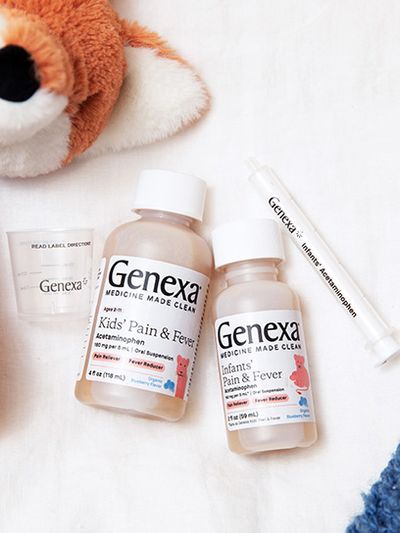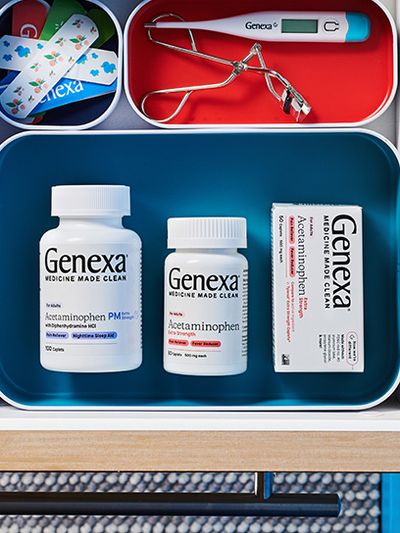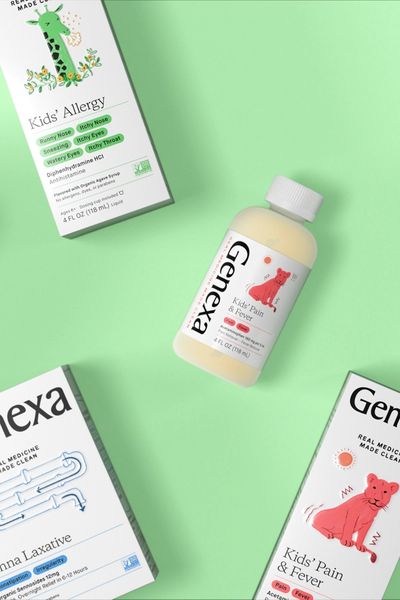How To Use Nasal Spray For Infants
Treating Your Child's Nasal Congestion
Table of contents:
If your infant is experiencing a stuffy nose, you might want to try using a saline nasal spray to clear their symptoms. This article will explain how to properly use a saline nasal spray for infants.
What is Saline Nasal Spray?
A saline nasal spray is simply a water and sodium chloride solution that is often used to clear the nasal passages. You can either buy saline nasal spray anywhere you buy over-the-counter medications or make it at home. Saline nasal sprays are recommended for everyone because they do not contain any medication.
Usually, saline nasal sprays that you buy are isotonic, which means that the solution has the same saline concentration as your body. Hypertonic saline nasal sprays have a higher concentration of salt than your body. Both types of saline nasal sprays are effective at treating a stuffy nose.
Uses Of Saline Nasal Spray
Saline nasal sprays are often used to clear mucus if you or your infant has a stuffy nose, allergies, dry nasal passages, or a viral infection such as the common cold. Saline sprays can also be used to keep the cilia in your nose healthy.
Cilia are the small hairs in the back of your nose that you can only see with a microscope. In your nose, cilia move back and move to transport mucus out of your sinuses and the back of your nose. Additionally, cilia help to humidity the air that goes into your lungs, traps the bacteria to keep it from entering your cells, and helps increase your sense of smell. There are also cilia in your lungs that also help to move mucus out of them.
Another use of saline nasal spray is to clear pollen from the nasal lining. If you think your infant is experiencing seasonal allergies, you can try using a saline nasal spray on them. To get the best results, you can try using the saline nasal spray at the end of the day, after allergens have accumulated in your infant’s nasal passages.
Especially during the winter months, the air inside your home can be particularly dry. If this is the case, it may cause your infant to have a stuffy nose. You can use a saline nasal spray to moisturize your infant’s nose if they are having trouble breathing during the winter months.
How To Use Saline Nasal Spray for Infants
If you decide to use a saline nasal spray to help treat your infant’s nasal congestion, it is important to use the spray correctly to provide the most relief for your child.
Steps for Using Saline Spray
- Hold your baby upright or in a reclined position in your arms. You can create a cradle with your arms and rest their head back into the crook of your arm.
- Place two or three saline drops in one nostril. If you have used the saline nasal spray before, make sure the top is clean and sterilized before you use it again.
- Wait several seconds for the saline to enter the nasal passages.
- If you have a bulb syringe as well, squeeze the bulb end closed. Make sure you do this when it is pointing away from your baby. The idea is to push all of the air out of it so that it is ready to suction.
- With the bulb squeezed, place the tip of the bulb syringe in the nostril that you put the drops into.
- Release your hold on the bulb. The suction created by pressing the bulb will pull any loose mucus or additional saline out of your baby’s nose.
- Squeeze the contents of the bulb syringe into the sink or trash can. Make sure all the mucus is out of the syringe.
- Wait a minute or two before you repeat the process. Given that the bulb syringe can feel slightly uncomfortable, your baby may need a few minutes to calm down before they are still enough for you to put the drops in their other nostril.
- Once they are calm, repeat the process for the other nostril.
Tips for Using Saline Nasal Spray
To make using saline nasal spray on your infant easier, you can try the following tips:
- If your baby is particularly squirmy, frustrated, or upset, you may benefit from having another adult with you to administer the saline nasal spray. Usually, it helps to have the person the infant is most comfortable holding them. The other person can hold their head still or keep their hands from grabbing at you while you administer the nasal spray.
- It also may be beneficial to administer the saline nasal spray before your infant feeds or sleeps. Given that both of these are times where the baby will need to be breathing especially clear, using the nasal spray before these times of day may help them eat with ease or fall asleep faster.
- If there is dried or sticky mucus on your infant’s nostrils before you want to use the saline nasal spray, you can use a warm washcloth to wash the mucus away first. Oftentimes, having dried mucus in the nostrils interferes with the effectiveness of the nasal spray.
- If you do use a bulb syringe with the nasal spray, make sure to clean it before and after use. Given that mucus enters the bulb syringe, it can hold bacteria. For this reason, it is helpful to clean it frequently with warm soap and water. Also, make sure you are only blowing air out of the bulb syringe when it is not in your baby’s nose to not worsen their illness.
How Else Can I Help My Infant’s Stuffy Nose?
Unlike the treatment options for older children and adults, infants cannot have decongestant medication until they are at least four years old. Certain decongestant medications can lead to serious side effects in children such as hypertension, excitation, and convulsions. For this reason, it is best to use other at-home remedies to clear your infant’s nasal passages.
Steam
Another remedy you can try to ease your infant’s nasal congestion is steam. You can try running a hot shower and then sitting in the bathroom with your infant for a while so they can inhale the steam. The steam may help loosen the mucus in their nostrils and provide much-needed relief. Remember not to get into the hot shower with your baby seeing as the hot water can scald them.
Humidifier
Another way to combat the dryness of your infant’s stuffy nose is to use a cool air humidifier. The air in your house can be dry which can lead to a stuffy nose, especially during the winter when the heating is on. A humidifier introduces moisture into the air and can ease your infant’s breathing. If you do use a humidifier, make sure to clean it often to avoid any fungus that may grow.
Hydrate and Rest
If your infant has a stuffy nose, it may be a sign of illness. If this is the case, make sure to get them extra rest and fluids. When your infant is sick, especially if they have a fever, they will be prone to dehydration.
When Should I Bring My Infant to the Doctor?
Most of the time, a stuffy nose is not a sign of serious illness and can be treated at home. However, if your infant has difficulty breathing, has trouble feeding or drinking, or has a fever, you may want to consult your doctor.
Other signs of serious breathing problems in children and infants that require medical attention include:
Blue or Gray Skin: When your infant’s face or chest turns blue or gray in color, they may be experiencing central cyanosis. This may be a sign of a respiratory or cardiovascular disorder. It’s important to take note of where the discoloration is happening to your child. If only their fingers or toes are briefly changing color, they may not be experiencing central cyanosis. You should call 911 immediately if your child’s center begins to change color.
Wheezing: If your child is wheezing, or making a high-pitched whistling sound during exhalations, they might have bronchiolitis or asthma. Given that wheezing can progress quickly and rapidly lower your child’s oxygen levels, make sure to seek medical attention right away if you hear them wheeze.
Conclusion
Although it can be distressing when your infant is congested, there are several ways to ease their stuffy nose. You can use a saline nasal spray, steam, or a humidifier to ease their symptoms. If you use a saline nasal spray, make sure to follow the correct steps to ensure that you are administering the drops properly. If you’re worried that your infant is having lots of difficulty breathing, seek medical attention as soon as possible.






